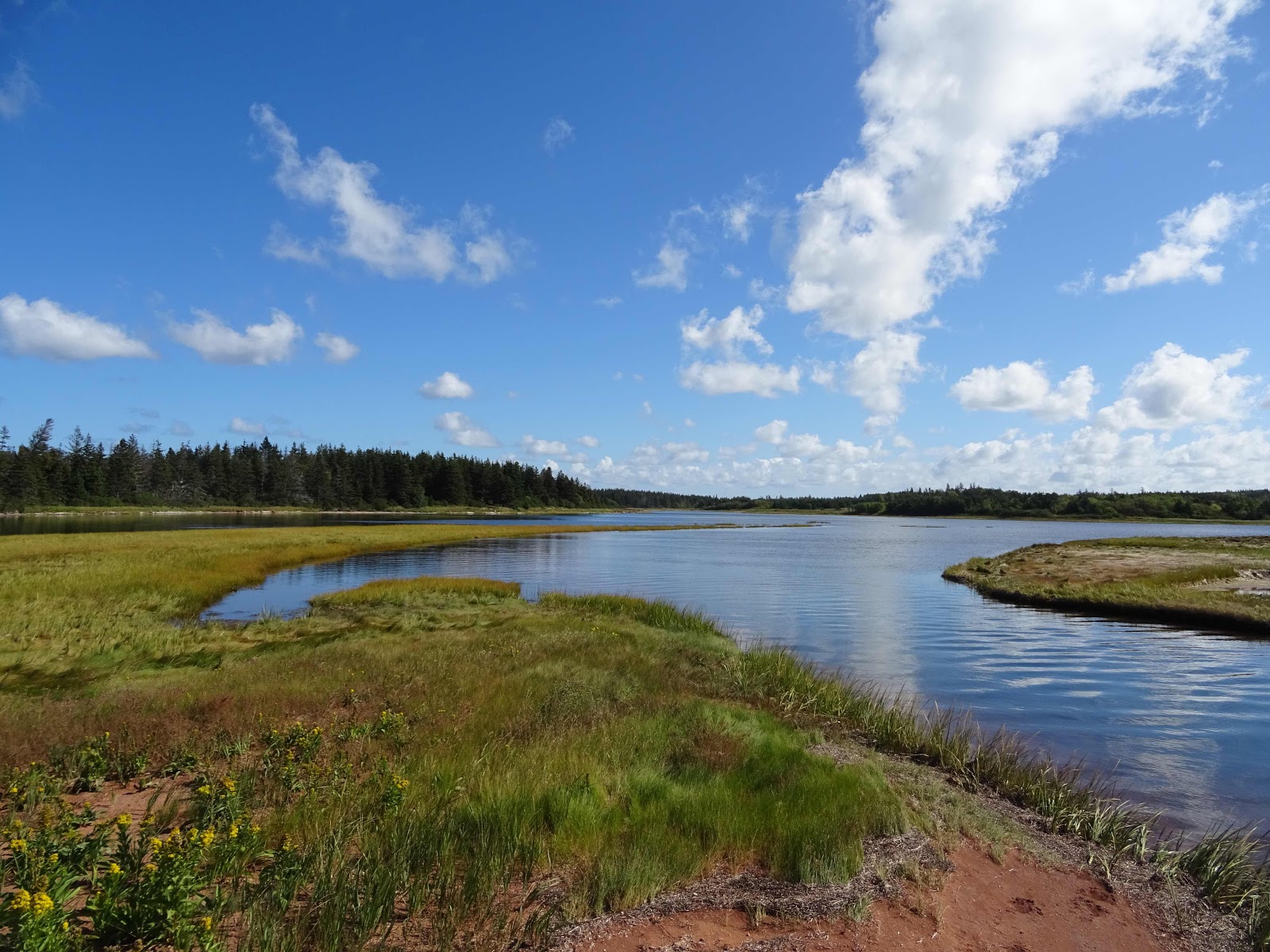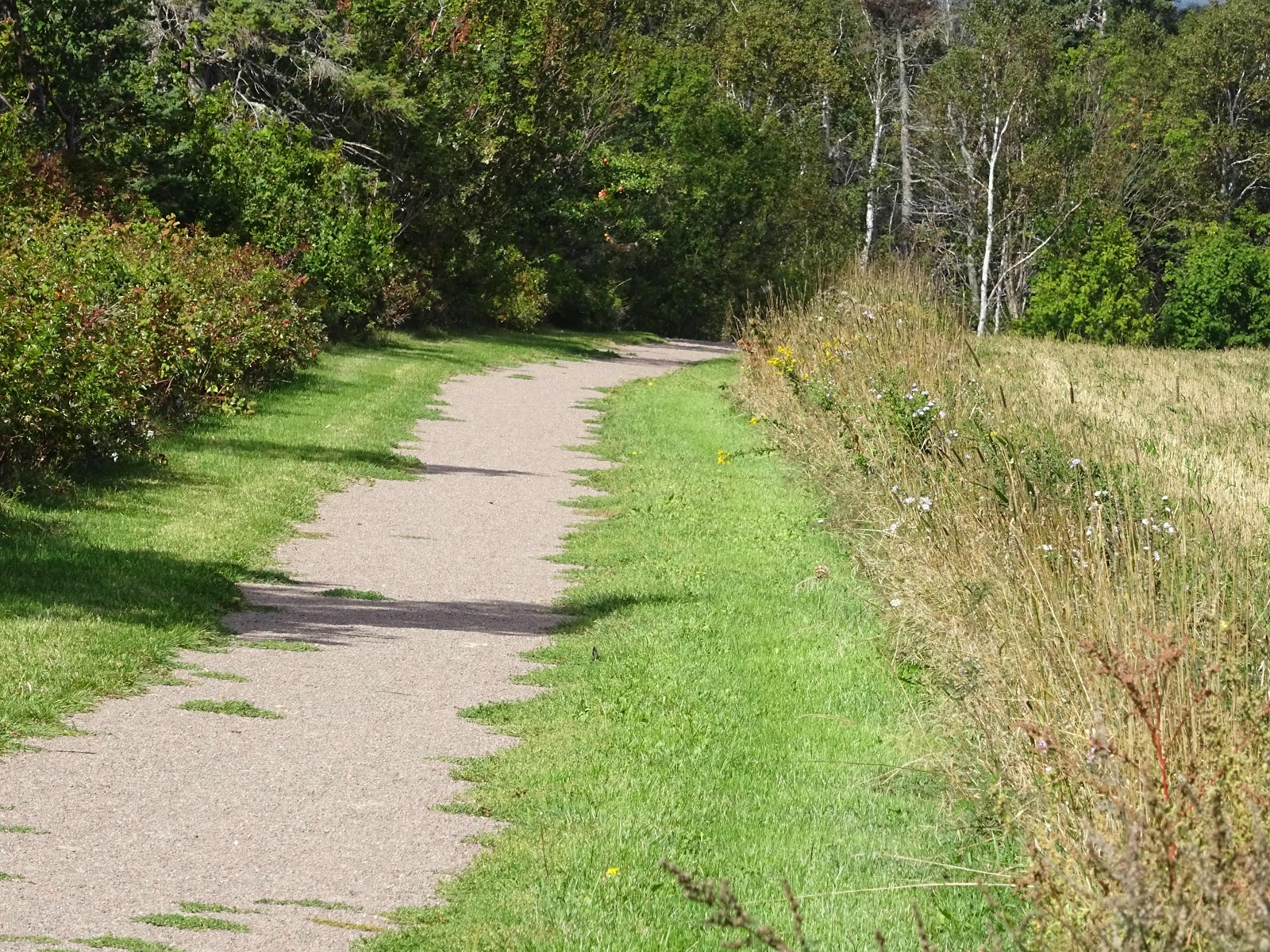It was a beautiful September day and we drove to the national park on Prince Edward Island in advance of post tropical storm Teddy. A year ago, a similar storm, Dorian, caused a tremendous amount of wind damage and our visits to the park were finished for the year.
With the possibility of another park closure, we had what could have been our last picnic in Cavendish Grove for 2020. We picnicked on a red bench which in the spring offers a great view of the water where ducks and geese swim with their young. This time of year, the pond is dry and grown over. Asters bloomed around us.

We brought our bikes along for our first expedition off the Confederation Trail. We started in the Grove after lunch and cycled to the Homestead Trail, through forest and farmland along by the sea. This trail was an adventure.
It has a gentle but long downward slope which sounds great for a cycler. However for this senior, new to biking, the trail had a rut which I had to stay in as I sped downward, brakes engaged and nerves frazzled. If I strayed out of the rut, I was in the trees or up on lumpy grass and who knows where. Either way would have been disastrous. The shadows on the trail and my poor eyesight made it hard to see details of the trail too. I cycled downhill on a balance beam through a tunnel of trees with impaired vision.

At the bottom of the slope, I stopped and cheered. It was scary but exhilarating, an adrenaline rush. My husband, behind me on the trail, watched the whole spectacle and thought I was a goner a few times. His experience on the E-bike was more controlled, or he is more skilled. Luckily we could loop back to the entrance rather than have to cycle up that particular slope. Otherwise, I’d be there yet.
After the balance beam, the trail opens to a clearing beside New London Bay.

In the distance the sand dunes on the other side of the bay are visible. As you follow the trail, you can see the Gulf of St. Lawrence on the far side of the dunes.

A pond empties into the bay and we heard unfamiliar birds along its perimeter.

I had the wrong camera for photos when they flew away.
The upward grade required I walk the bike a few times.

The view of the water, both sea and pond, kept me going however.

Besides, what choice did I have?

The last part of the trail with the dancing shadows

and the smell of apples fallen from the trees were perfect precursors to autumn which was a few days away at that time.

The ride was exhilarating but difficult. However, I am stronger with each ride and always enjoy the surroundings and the company. Cycling has been a great addition to life for my husband and me.
Update:
Post tropical storm Teddy hit us yesterday afternoon with high winds and torrential rain. There was a lull in the storm overnight but it’s miserable again this morning. This evening we will find out about damage around the island. However, this storm is not as bad as Dorian by the look and sound of it.
Happy autumn or spring to everyone around the planet.

